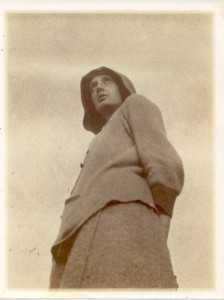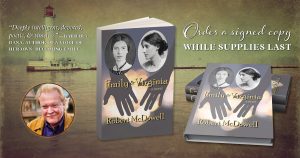I so wanted to love this film! There were lovely things about it. The color and composition, for instance. The actress who plays Lavinia actually looks a lot like Lavinia and the actress who plays Emily as a girl is lively and charming. I liked her better than Cynthia Nixon in the role. Keith Carradine is good as the father, but oh, the movie is Slow!
I can’t figure out why the writer and director made such choices! The Emily that emerges is bitter, disappointed in love and angry. At times, she almost looks demonic! This is not and never was Emily. Almost 2,000 poems refute this image. The movie would have us believe that Emily, rebuffed by Wadsworth, spirals into deeper depression, mirroring her shut-in mother’s. But her mother was not always a shut-in. She took to her bed after her husband’s death and suffered through a long illness, then died. In the movie, she’s actively dying the moment we first see her!
The business with Wadsworth almost certainly never happened. Emily saw him preach once. They exchanged correspondence. Emily was not shattered by the married Wadsworth’s eventual move to San Francisco. I don’t think she was madly in love with him.
Even worse is Emily’s “best friend” in the movie, especially in the first half. Clearly, the writer and director fell in love with this character. She has all the best lines early on! It’s a shame she’s a fabrication. The character existed, yes, but she was younger than Emily and there is little evidence that they ever actually met, let alone became best friends!
The movie shows us that Emily and Lavinia meet Sue after she marries Austin. In fact, Sue was Emily’s best friend! They knew each other well for six years before the marriage. Why didn’t the director focus on this friendship?
Also missing are the parties! The Dickinson girls were vivacious. They were sought after companions. One young man proposed to Emily! No sign of any of this. Lavinia was a terrific mimic and comedian, but we’d never know it from this film. Why?
Also eliminated are the last ten-to-fifteen years of Emily’s life! Where is Judge Lord? Where is the scene, well documented, in which Lavinia walks into the kitchen and finds Emily in the judge’s arms, the two kissing? Lord doesn’t even appear in the movie! Neither does Thomas Wentworth Higginson, one of the great men of letters of the era. He visited her twice, at least, and saw her face-to-face at least once. We know this because he describes her in his journal. He gives us the great description of her in her coffin, too, just before the lid is closed. But in the film, he doesn’t exist.
Austin and Sue’s children, Ned, Gilbert, Martha, never appear or are mentioned. Little Gilbert’s sudden death was the last of twin blows from which Emily never recovered (Judge Lord’s death in 1884 was the first—he died after proposing to her).
other annoying inaccuracies…There is no record that Emily was ever furious about Austin’s relationship with Mabel Loomis Todd. The two were deeply in love and when they met in the parlor, they locked the door. Unlikely that Emily ever walked in on them and read them the riot act. In fact, there is no historical evidence that Emily objected to the affair, which lasted until Austin’s death.
At Emily’s funeral…why oh why didn’t the director put her in a white casket? What an oversight! Also, the casket was not loaded into a horse-drawn hearse and driven to the cemetery. As per her request, six of the workmen employed by the Dickinsons carried her through the gardens to the cemetery. And yes, in the film she is buried in the wrong cemetery! There are two in Amherst. The real Emily lies in the other one. Sheez!
So the film gives us a mature Emily who is spurned in love, bitter, priggish, angry and judgmental—all things Emily was not. That’s disappointing. The movie reinforces a popular image of a depressed, reclusive spinster who eccentrically wrote poems and tied them into bundles. It’s maddening, really.
The movie even misses out on a great closing scene—when Lavinia discovers 1,800 poems in Emily’s room and decides she must find a way to get them published.
This film pricked me until I bled. At first, I imagined Emily being quite cross about it all, but later she visited and let me know she was laughing at the thought that she had eluded everyone once again.





 Sign up below to receive the full-length video of Robert’s engaging dialogue with
Sign up below to receive the full-length video of Robert’s engaging dialogue with 